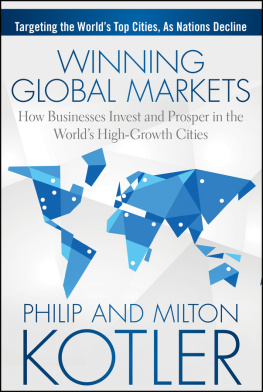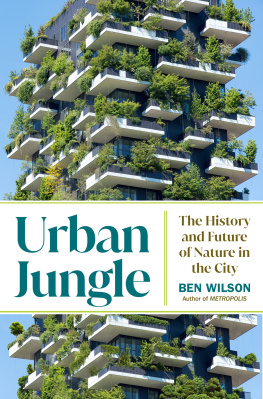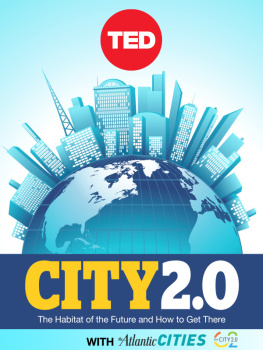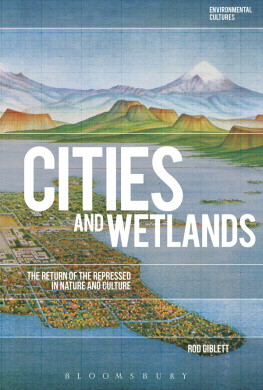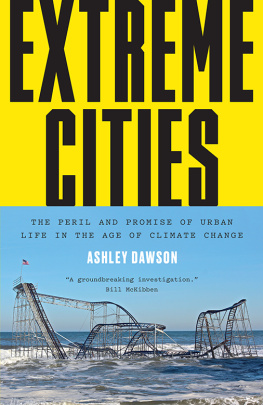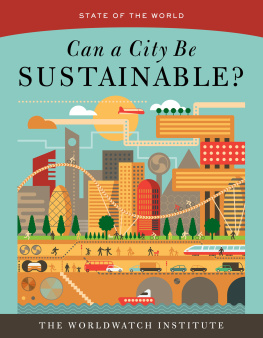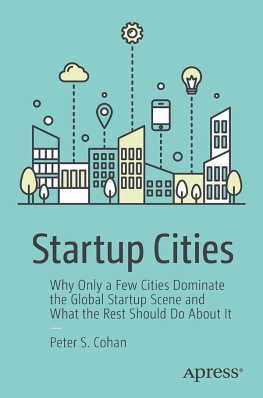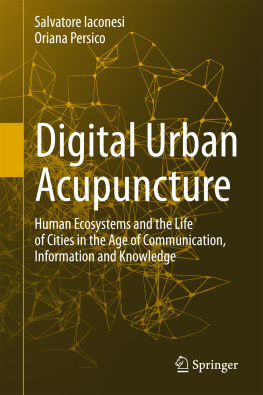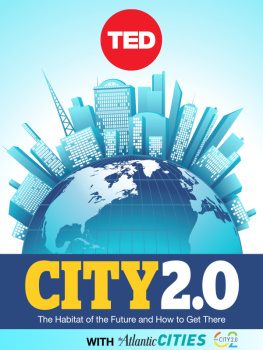PREFACE
The Yin and Yang of Cities
The story of cities and their relation to the natural world is a mass of contradictions. Yet our basic thesis is relatively simple: cities are the most extreme examples of environmental destruction, because the very act of their construction utterly destroys habitats, and because their voracious appetites for resources such as food and water extend far beyond their limits and, these days, all over the world. Yet ironically and simultaneously, cities represent the last best hope for conserving healthy remnants of the worlds species and ecosystemssystems vital to the continued existence of viable life, certainly including human life, on earth.
Cities have done a lot to clean up their environmental act in recent decades, and the general green movement that many cities have begun to follow has improved their internal environments considerably: the air is generally fresher, at least in some places; the water safer; and parks and gardens have begun to be restaffed by species (some native, some alien) that had all but disappeared from urban settings. And the recent work of urban planners, architects, and others concerned with the ultimate fates of cities has made a convincing case that what might be best for the still-burgeoning human population would be to concentrate proportionately even greater numbers of us into cities, thereby providing at least a modicum of relief to the seemingly unending development of rural and wild areas that inevitably results in their degradation.
But there is more to the plus side of cities in relation to the natural world. By their very nature, by their very concentration of human beings, what cities bring to the table as a source of at least partial environmental global salvation is their cultural resources in the broadest sense: their centers of learning, research, government, finance, mediaall sorts of organizations and institutions that increasingly play active local, national, and international roles in solving environmental problems. Cities now are reaching out and giving back as much as they are taking away and, in some cases, ameliorating environmental destruction.
Both of us are New Yorkers born and bred. We love our city and have learned much about it, particularly through the fact that we belong to a relatively rare breed: we are native New Yorkers who have spent our professional lives studying what used to be called natural historythe geological and biological history of the earth, including the physical environment, the ecosystems, and the species around us today. Indeed, we have worked side by side at the American Museum of Natural History since the 1960s (though we are both now retired). Together with other colleagues, we worked to develop the first issues hall at the American Museum: the Hall of Biodiversity, which opened in the mid-1990s. And though much of our work has involved research in paleontology (the history of ancient and long-since extinct species), each of us has branched out, extending our interests in rocks and fossils to a variety of environmental issues in the modern world.
One of us (SH) has become a well-known figure in local New York environmental circles, concentrating many of his efforts on issues such as that of water resources and quality and on its counterpart, the cleaning of polluted waterways and the general problem of sanitation. He has been a geology and environmental consultant for many organizations (see this volumes acknowledgments). He knows all the parks and green spaces and their history intimately. And he has walked all the streets of Manhattan and many of the surrounding boroughs and has led trips all over the New York cityscape. His photos and personal vignettes included in our text bring to life the environmental and geologic story of New York and help us, at the same time, to see that New York, unique though it is in many ways, is nonetheless representative of cities the world over in terms of its path of environmental destruction, then amelioration. Also unique is its development of significant institutions that we feel lie at the heart of ongoing efforts to stave off further global environmental damage.
The other of us (NE) has been interested in evolutionary biology throughout his career, developing (with the late Stephen Jay Gould) the theory of punctuated equilibria in the late 1960s and early 1970s. By the 1980s, it had become undeniably clear (largely through the efforts of Norman D. Newell, mentor to both Gould and Eldredge and chairman of the American Museum department in which Horenstein and, a bit later, Eldredge spent their working careers) that nothing much happens in evolution without prior environmental shake-ups and extinctions of preexisting species, sometimes including monumental global mass extinction events. The obvious direction was to ask what past extinction events could tell us about modern-day extinctions: the Sixth Extinction that had become all too clear was (and still is) engulfing the species of the modern world. That of course meant learning about the modern extinction crisis, which led to publication of three earlier books and to the work with Horenstein and others on the museums Hall of Biodiversity.
In a nutshell, we take environmental problems extremely seriously and have made it our business to learn as much about the yin and yang of the thorny relationship between cities and the natural world. Our special knowledge of, and love for, New York has provided us with a template for exploring these issues in this book. Read it for the message, by all means. But read it, too, for the sketch of New Yorks environmental history we provide.



